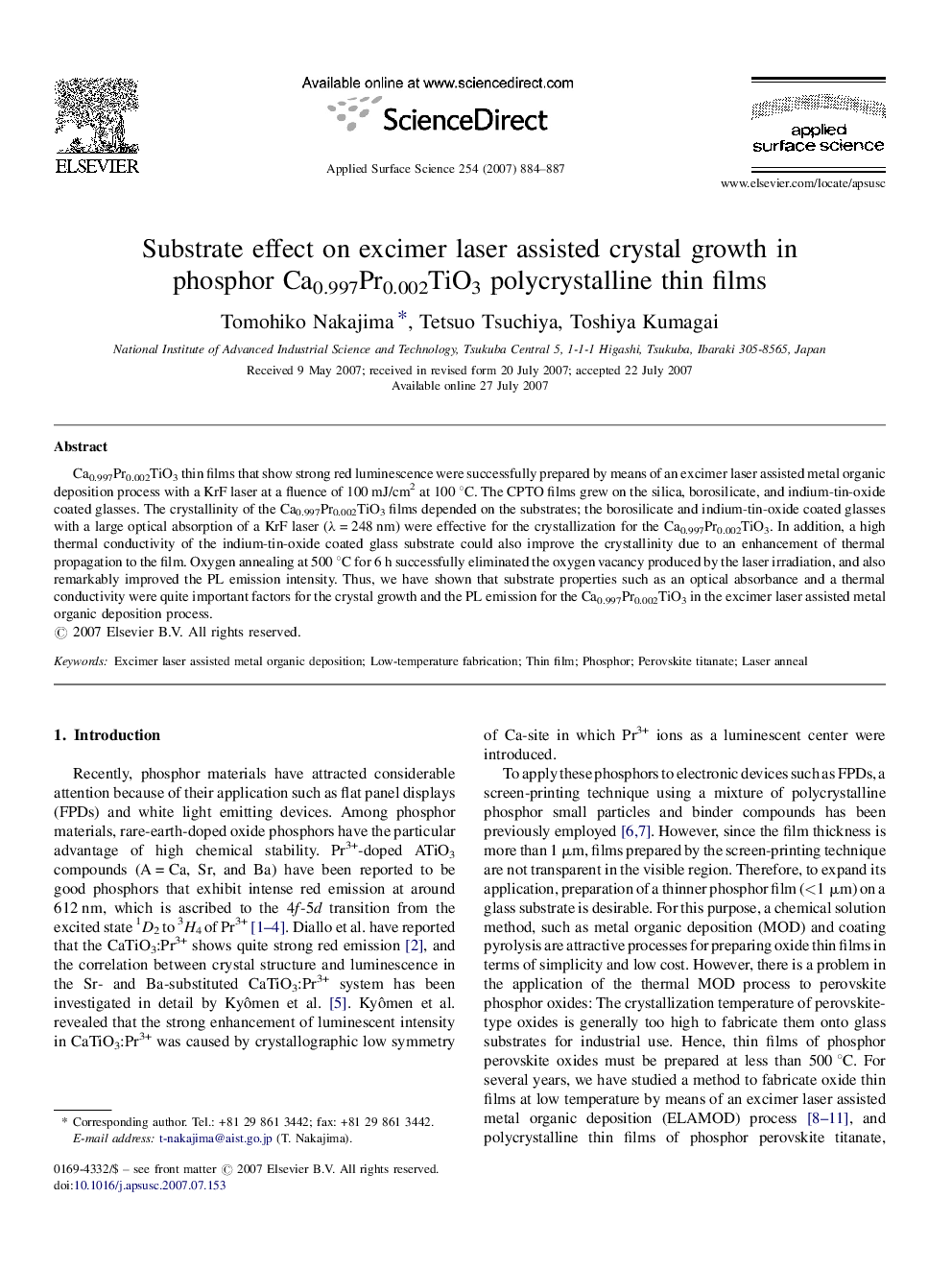| Article ID | Journal | Published Year | Pages | File Type |
|---|---|---|---|---|
| 5368136 | Applied Surface Science | 2007 | 4 Pages |
Ca0.997Pr0.002TiO3 thin films that show strong red luminescence were successfully prepared by means of an excimer laser assisted metal organic deposition process with a KrF laser at a fluence of 100 mJ/cm2 at 100 °C. The CPTO films grew on the silica, borosilicate, and indium-tin-oxide coated glasses. The crystallinity of the Ca0.997Pr0.002TiO3 films depended on the substrates; the borosilicate and indium-tin-oxide coated glasses with a large optical absorption of a KrF laser (λ = 248 nm) were effective for the crystallization for the Ca0.997Pr0.002TiO3. In addition, a high thermal conductivity of the indium-tin-oxide coated glass substrate could also improve the crystallinity due to an enhancement of thermal propagation to the film. Oxygen annealing at 500 °C for 6 h successfully eliminated the oxygen vacancy produced by the laser irradiation, and also remarkably improved the PL emission intensity. Thus, we have shown that substrate properties such as an optical absorbance and a thermal conductivity were quite important factors for the crystal growth and the PL emission for the Ca0.997Pr0.002TiO3 in the excimer laser assisted metal organic deposition process.
